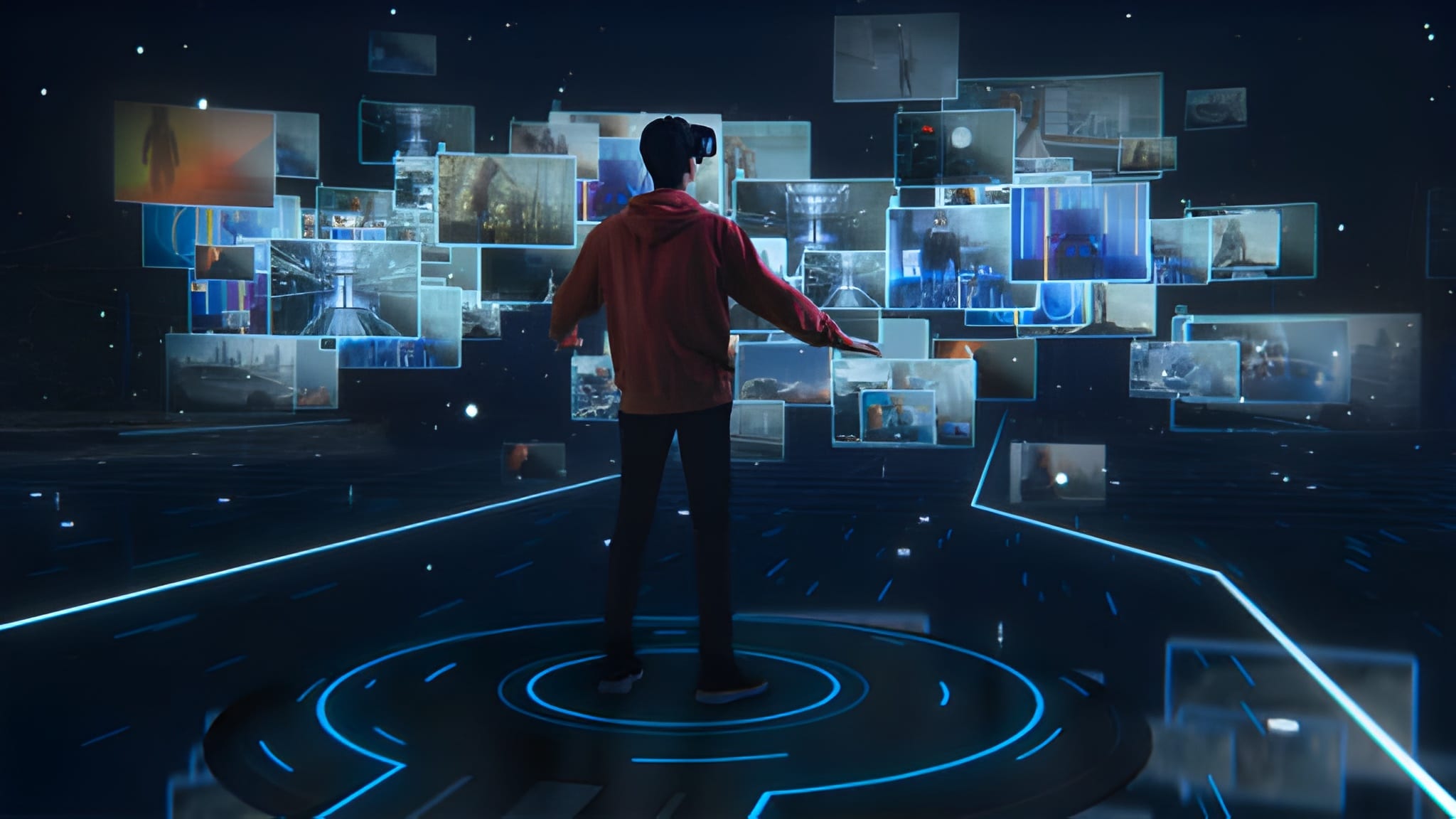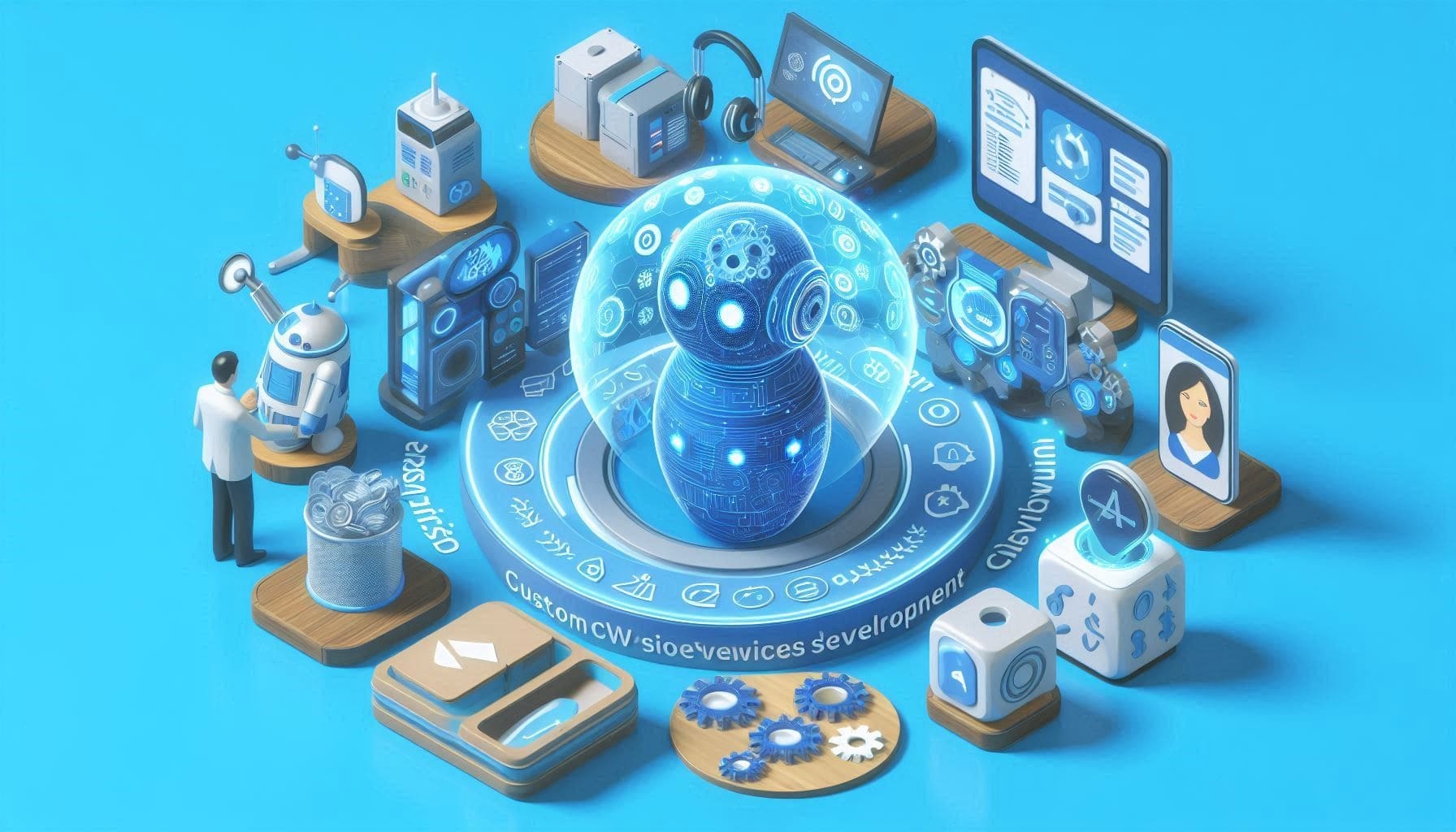The history of video games is a story of ever-deepening immersion. We have journeyed from controlling simple 2D sprites on a screen to exploring vast, photorealistic 3D worlds. With each technological leap, the boundary between the player and the game has become thinner. Today, we stand at the precipice of the next great paradigm shift in interactive entertainment, one that promises to dissolve that boundary entirely. This new frontier is defined by two transformative technologies: Augmented Reality (AR) and Virtual Reality (VR).
These technologies are moving gaming beyond the confines of the flat screen and into the three-dimensional world we inhabit. They represent a fundamental change in how we play, interact, and experience digital content. For developers and businesses, the rise of AR VR gaming apps is not just an incremental trend; it is the dawn of a new platform for creativity, connection, and commerce. Understanding the role of these immersive technologies is crucial for anyone looking to be a part of the future of gaming.
What are AR and VR in Gaming?
While often grouped together, AR and VR are distinct technologies that offer fundamentally different experiences.
Augmented Reality (AR) is a technology that overlays computer-generated images, sounds, and information onto the real world. It does not replace your surroundings; it enhances them. The most ubiquitous example of AR gaming is Pokémon GO, which uses a smartphone’s camera to make it appear as if digital creatures are present in the player’s real-world environment. AR gaming uses the world as its canvas.
Virtual Reality (VR), on the other hand, is a technology that completely replaces the user’s real-world environment with a fully computer-generated one. By wearing a dedicated VR headset, the user is transported to a new, digital world. Their senses of sight and sound are completely immersed in this virtual space, creating a powerful feeling of “presence.” Games like Beat Saber or Half-Life: Alyx are prime examples, where the player feels physically present and able to interact with the digital environment. Building these deeply interactive worlds requires the specialized skills of a professional Game Development Company.
Difference: AR Gaming vs. VR Gaming
To make a strategic decision about where to invest, it’s vital to understand the key differences between these two powerful technologies.
| Feature | AR (Augmented Reality) Gaming | VR (Virtual Reality) Gaming |
| Environment | Overlays digital elements onto the real world | Creates a fully digital, immersive world |
| Hardware | Primarily smartphones and tablets | Requires dedicated VR headsets (e.g., Meta Quest, PSVR) |
| User Experience | Interactive with the user’s physical surroundings | Complete sensory immersion, blocking out the real world |
| Accessibility | Extremely high (billions of capable smartphones exist) | Lower (requires purchase of specialized hardware) |
| Popular Example | Pokémon GO, Snapchat Lenses | Beat Saber, VRChat |
Relevance in 2025: The Tipping Point for Immersive Gaming
For years, AR and VR were seen as niche technologies with potential but limited mainstream adoption. That has changed dramatically. In 2025, we are at a tipping point where immersive gaming is rapidly moving from a hobby for early adopters to a major pillar of the entertainment industry.
Several factors are driving this shift. On the AR side, the processing power of modern smartphones has made sophisticated and graphically impressive AR experiences accessible to billions of people. On the VR side, the hardware has hit a critical sweet spot. Standalone headsets like the Meta Quest 3 are powerful, affordable, and completely untethered, removing the need for an expensive PC. This has created a vibrant and growing market for VR mobile apps. Furthermore, massive investments from tech giants like Meta, Apple (with its Vision Pro), and Sony are signaling a long-term commitment to the growth of this ecosystem, fueling innovation and consumer interest in immersive gaming.
Benefits and Opportunities in AR/VR Gaming
The shift from flat screens to 3D spaces unlocks a universe of new possibilities for game developers and businesses.
Unprecedented Levels of Immersion
This is the core value proposition. VR, in particular, creates a sense of “presence”—the genuine feeling of being physically located in the virtual world. This deep level of immersion can make experiences more impactful, emotional, and memorable than anything possible on a traditional monitor. For players, this means a more engaging and visceral form of entertainment. For developers, it means a more powerful medium for storytelling and creating breathtaking worlds. This is the ultimate form of immersive gaming.
New Genres and Gameplay Mechanics
AR and VR are not just for creating more realistic versions of existing games; they are for inventing entirely new ways to play. VR has given rise to the physical rhythm game genre (Beat Saber) and highly realistic simulation games. AR has enabled location-based adventure games that turn entire cities into a game board and social deduction games that take place in your own living room. These technologies are a blank canvas for gameplay innovation.
The Rise of VR Mobile Apps
The success of standalone VR headsets has created a booming new market that can be thought of as the next evolution of mobile gaming. These headsets are essentially powerful, dedicated mobile devices. This has opened the door for a new generation of VR mobile apps that are easy to distribute through curated app stores, much like the iOS and Android ecosystems. This market is growing rapidly and represents a huge opportunity for developers to reach a new and highly engaged audience.
Social and Multiplayer Experiences
Perhaps the most profound impact of these technologies is on social interaction. Social VR platforms like VRChat and Rec Room are not just games; they are burgeoning virtual societies where people from all over the world can meet, interact, and share experiences in a deeply personal way. These platforms are creating a “metaverse” in its truest sense, and the opportunities for social gaming, virtual events, and digital commerce within these spaces are immense.
How to Approach AR/VR Game Development
Creating successful AR VR gaming apps requires a new set of design principles and technical skills.
First is the strategic choice of platform. Do you target the massive, existing audience of mobile AR, or do you focus on the more deeply immersive but smaller audience of VR? A Mobile App Development Agency with experience in ARKit and ARCore can help you tap into the smartphone market.
Second is a relentless focus on user comfort. This is especially critical in VR. Poorly designed experiences can easily cause motion sickness, which will cause a user to abandon the app immediately. Developers must master new techniques for locomotion, interaction design, and performance optimization to ensure a comfortable and enjoyable experience. This level of polish often requires Custom Mobile App Development Services.
Finally, it is essential to recognize that AR/VR development is a specialized field. It requires expertise in 3D graphics, spatial computing, and a deep understanding of the unique hardware and software platforms. The entire process, from conceptualization to launch and beyond, is a complex undertaking. Partnering with a company that offers comprehensive Product Development Services and has a proven track record in gaming can be the key to navigating this complex but rewarding new landscape.
Conclusion
Augmented and Virtual Reality represent the next great frontier in human-computer interaction, and gaming is at the bleeding edge of this transformation. The shift from playing a game on a screen to being inside the game is a profound one, unlocking new levels of creativity, connection, and immersion. The technologies are maturing, the audience is growing, and the opportunities for innovation have never been greater.
At Wildnet Edge, we see the future of immersive gaming as being inextricably linked with artificial intelligence. Our AI-first approach focuses on building AR VR gaming apps that are not just immersive, but truly alive. We leverage AI to power intelligent, non-player characters (NPCs) that can hold realistic conversations and react dynamically to the player’s actions. We use procedural generation to create vast, ever-changing virtual worlds for players to explore. And we build adaptive AR experiences that can intelligently interact with a player’s real-world environment. This is the future we are building: a world where AI transforms these new realities from static environments into living, breathing digital worlds.
FAQs
The main difference is the environment. AR gaming overlays digital elements onto your real-world surroundings using a device like a smartphone. VR gaming completely replaces your real-world environment with a fully digital one, requiring a dedicated VR headset for total immersion.
Yes, the market for VR mobile apps, particularly on standalone headsets like the Meta Quest series, is one of the fastest-growing segments of the gaming industry. These devices have made high-quality VR accessible without the need for an expensive PC, creating a large and engaged user base.
One of the biggest technical and design challenges is “locomotion” and preventing motion sickness. Developers must create intuitive and comfortable ways for players to move around in the virtual world without causing the disconnect between physical movement and visual perception that leads to discomfort.
While it’s possible, it’s often not a simple port. Effective AR and VR games are designed from the ground up to take advantage of the unique strengths of the medium, such as 3D interaction and spatial awareness. Simply retrofitting an existing 2D game often results in a poor user experience.
Creating high-quality immersive gaming experiences requires a specialized skill set, including expertise in 3D modeling and animation, experience with game engines like Unity or Unreal Engine, a deep understanding of the specific AR/VR hardware platforms, and a strong focus on user experience design for 3D spaces.

Nitin Agarwal is a veteran in custom software development. He is fascinated by how software can turn ideas into real-world solutions. With extensive experience designing scalable and efficient systems, he focuses on creating software that delivers tangible results. Nitin enjoys exploring emerging technologies, taking on challenging projects, and mentoring teams to bring ideas to life. He believes that good software is not just about code; it’s about understanding problems and creating value for users. For him, great software combines thoughtful design, clever engineering, and a clear understanding of the problems it’s meant to solve.
 sales@wildnetedge.com
sales@wildnetedge.com +1 (212) 901 8616
+1 (212) 901 8616 +1 (437) 225-7733
+1 (437) 225-7733































